The Leibniz-IZW regular publishes press releases on key findings and insights from its research and on events, awards or personalia. The press releases are distributed directly to journalists on our press release distribution mailing list. Press releases are also disseminated through the distribution services Informationsdienst Wissenschaft, AlphaGalileo and EurekAlert. Are you interested in receiving our press releases directly via e-mail? In this case please send us an email to presse@izw-berlin.de.
Current press releases
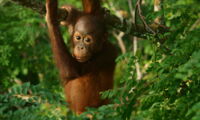
Clear path for wildlife: Another milestone reached for wildlife corridor in Borneo by converting oil palm plantations into rainforest
One year ago, the Rhino and Forest Fund (RFF) – a spin-off of the Leibniz Institute for Zoo and Wildlife Research (Leibniz-IZW) – and the Borneo Orangutan Survival (BOS) Deutschland e.V. launched a collaboration to convert oil palm plantations into new rainforest in Malaysian Borneo. These new rainforest sites will serve as a wildlife corridor between two protected areas that are currently separated by plantations impassable to many wildlife species: Tabin and Kulamba Wildlife Reserves. Within three years, the RFF and other partners have acquired 65 hectares of key areas (forest and plantation areas) with guidance from the Leibniz-IZW. The areas were transferred to the Sabah Forestry Department (SFD), which assigned them to the highest protection status. Since the collaboration of RFF and BOS started, approximately 8,000 new trees were planted and now grow to become valuable wildlife habitat.
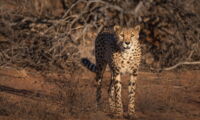
Scientists identify hotspots of cheetah activity as a key to solving the cheetah-farmer conflict in Namibia
Rural central Namibia is one of the most important strongholds of the declining global cheetah population. Here, the rarest large African cat lives on privately owned farmland. A traditional conflict poses a threat to them,as they occasionally prey on cattle calves and are therefore rarely welcomed on the farms. New insights into the cheetah’s spatial behaviour provide a viable solution to this human-wildlife conflict: In the core areas of male cheetah territories all local males and females frequently meet to exchange information. This results in hotspots of cheetah activity in these “communication hubs” and in substantially less activity in the vast areas between the core areas of the territories. Implementing this knowledge and moving their breeding herds with young calves out of these hotspots, farmers were able to reduce livestock losses by more than 80 percent. These insights are the result of a close and trusting cooperation between scientists from the Leibniz Institute for Zoo and Wildlife Research (Leibniz-IZW) and farmers in central Namibia. They are published in the scientific journal “Proceedings of the National Academy of Sciences of the United States of America”.
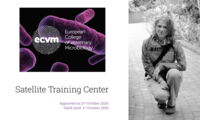
Leibniz-IZW receives approval as Satellite Training Centre of the European College of Veterinary Microbiology
The European Board of Veterinary Specialisation has recognised Dr Kristin Mühldorfer, microbiology specialist in the Leibniz-IZW Department of Wildlife Diseases, as a de facto diplomate of the European College of Veterinary Microbiology (ECVM). Simultaneously, the Leibniz-IZW received approval as a Satellite Training Centre to participate in the ECVM residency programme and to promote high quality training in the discipline of veterinary microbiology at the European level. Residents will benefit from the long hands-on and scientific experience of bacteriology and pathology in wildlife disease diagnostics, and gain insights into research activities of Mühldorfer and her colleagues.
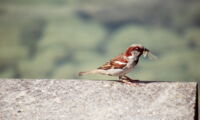
Abundance of prey species is key to bird diversity in cities
Urbanisation represents a drastic change to natural habitats and poses multiple challenges to many wildlife species, thereby affecting the occurrence and the abundance of many bird species. A team of scientists from the Leibniz Institute for Zoo and Wildlife Research (Leibniz-IZW) and the Technische Universität Berlin (TUB) collaborated to analyse breeding bird data from the Senate of Berlin gathered by citizen scientists. They found that the abundance of invertebrates such as insects or spiders as prey is a key factor affecting bird diversity in the city. The more prey is available, the more diverse the urban bird communities are. This demonstrates the importance of species interactions for explaining urban biodiversity in addition to impacts of anthropogenic disturbance and habitat structure. The results are published in the scientific journal “Diversity and Distributions”.
Read more … Abundance of prey species is key to bird diversity in cities
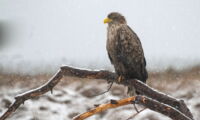
Scientific consortium Bird10K publishes world's largest genome resource for bird species to date
The international consortium Bird10K aims to produce genome sequences for all known bird species in the world. Now the team of scientists around Prof Andre Franke at the Institute for Clinical Molecular Biology at the University of Kiel (IKMB) has reached a new milestone: In the scientific journal "Nature" they published the largest vertebrate genome project to date with a total of 363 species. Franke's team, led by Dr Marc Höppner from the IKMB, used the expertise and modern technical equipment of the Kiel Genome Centre CCGA for this project. Part of the genome project is the best genome reference to date for the strictly protected white-tailed sea eagle, which was created in cooperation with the Leibniz Institute for Zoo and Wildlife Research (Leibniz-IZW). The genome resource lays the foundation for a large number of research projects on the biology of different species and will also make a significant contribution to their protection.
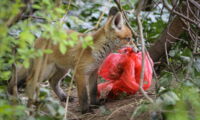
Specialised omnivores – individual red foxes prefer different foods in the city and the countryside
Foxes are considered to be particularly adaptable and suited to life in large cities. A team of scientists from the Leibniz Institute for Zoo and Wildlife Research (Leibniz-IZW) in cooperation with the Berlin-Brandenburg State Laboratory has now deciphered an important aspect of these adaptations. Using stable isotope analysis, they showed that individual red foxes (Vulpes vulpes) have a much narrower diet than might be expected from their omnivorous habits. The population of country foxes had a much broader diet than their urban conspecifics, whose diet differed little between individuals. The diet of urban and country foxes showed little overlap. This combination of specialisation and flexibility is a key to this omnivore's adaptability, according to a paper published in the scientific journal “Ecology and Evolution”.
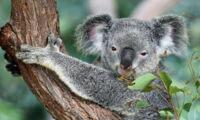
Who are your neighbours? Advancing wildlife genomics through the development of molecular methods
A team of scientists from the Leibniz Institute for Zoo and Wildlife Research (Leibniz-IZW), the Australian Museum and the Max Delbrück Center for Molecular Medicine (MDC) report a new method for identifying any genome sequence located next to a known sequence. It is often difficult to precisely determine unknown sequences close to small known fragments. Whole genome sequencing can be a solution, but it’s a very cost intensive approach. In order to find a more efficient technique, the scientists developed Sonication Inverse PCR (SIP): First, DNA is cut into random pieces using ultrasound waves. After DNA fragmentation, long-range inverse PCR is performed followed by long-fragment high-throughput sequencing. SIP can be used to characterise any DNA sequence (near a known sequence) and can be applied across genomics applications within a clinical setting as well as molecular evolutionary analyses. The results are reported in the scientific journal “Methods in Ecology and Evolution”.
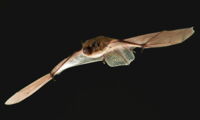
Bats save energy by reducing energetically costly immune functions during seasonal migration
Both seasonal migration and the maintenance and use of an effective immune system come with substantial metabolic costs and are responsible for high levels of oxidative stress. How do animals cope in a situation when energy is limited and both costly body functions are needed? A team of scientists led by the Leibniz Institute for Zoo and Wildlife Research (Leibniz-IZW) investigated whether and how the immune response changes between pre-migration and migration seasons in the Nathusius pipistrelle bat. They confirmed that migratory bats favour the energetically “cheaper” non-cellular (humoral) immunity during an immune challenge and selectively suppress cellular immune responses. Thereby, bats save energy much needed for their annual migration. The results are published in the scientific journal “Scientific Reports”.

